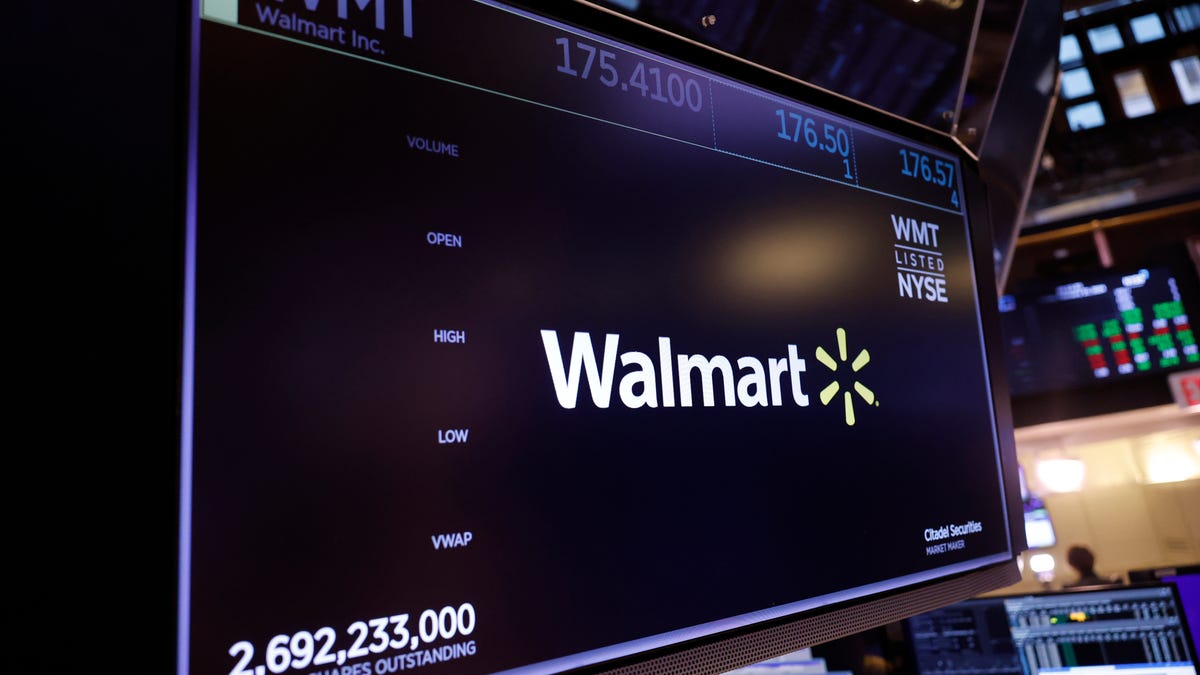Manufacturing is thriving in the South. Here's why neither party can admit it. Both parties are afraid to confront the real story behind manufacturing losses.
Markets appear to be writing off the latest Sino-American trade conflict as quickly as they priced it in. China’s benchmark CSI 300 index (.CSI300)
, opens new tab is up 1.4% this year, marking a full recovery from its sharp drop in early April after President Donald Trump announced a 34% reciprocal tariff on Chinese goods, which swiftly spiralled into triple-digit retaliatory levies. The latter has been cancelled and the former suspended for 90 days, leaving the official reciprocal charge at 10%, level with other countries.
In reality, it's much higher. Beijing’s burden was already heavier, having started out Trump’s second term with effective tariffs of roughly 11% incurred during his previous trade war. Almost immediately, the White House slapped another 20% on Chinese goods, citing concerns over fentanyl. That, stacked atop the other blanket levies, brings the country’s total to more than 40%.
The administration did carve out some exemptions for smartphones, computers, and other electronics. Factor in both those, but also new global tariffs on products like steel, and the effective rate is almost 32%, per Fitch. That’s far higher than the global average of about 13%, the rating agency estimates.

Optimists may take heart from the speed with which Beijing and Washington scrapped the retaliatory levies. So far, though, aside from a modest and preliminary pact with the UK, there is little indication that U.S. discussions with its other trading partners are yielding much real progress ahead of their 90-day deadline in early July.
Worse, the electronics carve-out on April 13 was followed the next day by a national security probe into semiconductor imports. If that ends up shrinking the loophole and pushing the effective rate on China higher, it will complicate already fraught trade talks.
Those with skin in the game don’t expect a quick deal restoring the status quo ante. Apple (AAPL.O), opens a new tab intends to shift production of most U.S.-bound iPhones to India, Reuters reported last month. Last week, Allan Wong, CEO of Hong Kong’s Vtech (0303.HK), opens new tab — one of the world’s largest toymakers and a supplier for Walmart (WMT.N), opens new tab — told the Financial Times that he planned to shift all production for the U.S. market out of China by the end of next year.
Other manufacturers previously battered by protracted uncertainty during Trump's 2018-2020 trade war are planning similar moves, Nikkei and others have reported. Traders may be betting on a quick resolution, but that's at odds with the dire situation on the ground.
The effective U.S. tariff rate on imports from China currently stands at 31.8%, per a report from ratings agency Fitch on May 13, the highest of any trading partner. That's after President Donald Trump's administration, on May 12, suspended for 90 days the 34% U.S. reciprocal tariff on goods from the People's Republic and cancelled triple-digit retaliatory levies imposed last month.
The White House exempted smartphones, computers, and some other electronics from reciprocal tariffs on April 13, but opened a national security probe into semiconductor imports the following day.
Allan Wong, CEO of Hong Kong-based VTech, one of the world’s largest toymakers and suppliers for Walmart, told the Financial Times on May 14 that despite the trade truce, his company planned to shift all production for the American market out of China by the end of 2026.
For years, a popular narrative has painted the Sun Belt—stretching from Texas to the Carolinas—as a predatory force siphoning manufacturing jobs from the Rust Belt’s historic industrial strongholds like Ohio, Michigan, and Pennsylvania. This oversimplified story of regional rivalry misses the mark, ignoring broader economic realities and the complex dynamics of modern manufacturing. The idea that the Sun Belt’s gain is the Rust Belt’s loss is more myth than fact.
First, the decline of Rust Belt manufacturing predates the Sun Belt’s industrial rise. Automation, global competition, and trade policies like NAFTA began eroding factory jobs in the Midwest and Northeast as early as the 1970s. By the time Sun Belt states started attracting manufacturers with lower taxes, fewer unions, and cheaper land, the Rust Belt’s job losses were already entrenched. Data from the Bureau of Labor Statistics shows manufacturing employment nationwide peaked in 1979 at 19.5 million jobs; today, it’s around 13 million. This national trend, not regional theft, drives the Rust Belt’s struggles.
Second, the Sun Belt’s manufacturing boom isn’t just about poaching. States like Georgia, Texas, and South Carolina have invested heavily in infrastructure, workforce training, and incentives tailored to high-tech industries like semiconductors, electric vehicles, and renewable energy. For example, Tesla’s Gigafactory in Austin and Samsung’s chip plant in Taylor, Texas, reflect global demand for advanced manufacturing, not a zero-sum game with the Rust Belt. These jobs often require different skills and capital-intensive facilities that don’t easily relocate from one region to another.
Meanwhile, the Rust Belt isn’t standing still. Michigan and Ohio are seeing a resurgence in automotive and battery manufacturing, spurred by federal investments like the CHIPS Act and the Inflation Reduction Act. Lordstown, Ohio, once a symbol of industrial decline, now hosts Foxconn’s electric vehicle production. The Economic Policy Institute reported in 2024 that Rust Belt states added 150,000 manufacturing jobs since 2020, outpacing some Sun Belt gains relative to population.
The real issue isn’t one region robbing another, but structural challenges facing all American workers. Both regions face labor shortages, with manufacturers struggling to find skilled workers for increasingly technical roles. Wage stagnation persists despite job growth: Sun Belt workers often earn less due to weaker labor protections, while Rust Belt unions fight to maintain benefits eroded by decades of corporate cost-cutting. Instead of pitting regions against each other, policymakers should focus on nationwide solutions—expanding vocational training, boosting trade enforcement, and incentivizing high-wage job creation.
The Sun Belt-Rust Belt divide also distracts from global realities. China and Southeast Asia remain far larger competitors for manufacturing than any domestic region. In 2023, the U.S. trade deficit in manufactured goods hit $1.1 trillion, dwarfing regional job shifts. Framing the issue as a domestic tug-of-war ignores the need for a unified strategy to compete internationally.
This myth of regional theft fuels divisive politics and obscures shared goals. Both the Sun Belt and Rust Belt benefit from a strong national manufacturing base. Rather than pointing fingers, leaders should recognize that a rising tide, through smart policy and investment, can lift all regions. The story isn’t about winners and losers within America; it’s about ensuring America’s industrial future thrives everywhere.










:strip_icc()/i.s3.glbimg.com/v1/AUTH_63b422c2caee4269b8b34177e8876b93/internal_photos/bs/2025/q/m/8f9LpUS3CaLFbcA6cQ0A/109856146-pa-20-20bras-c3-adlia-20df-2029-01-2025-20ministro-20da-20fazenda-20fernando-20haddad-20fala-20com-20a-20imprensa-20ap-c3-b3s-20r.jpg)
:max_bytes(150000):strip_icc()/GettyImages-2209422147-5da65cad90374aa0abfa699b5468fccc.jpg)

